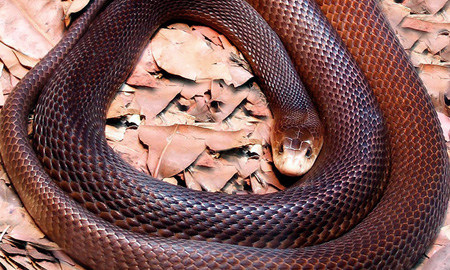Introduction
When it pertains to the fascinating globe of snakes, couple of species record the creative imagination quite like the baby tiger serpent. Known for their distinct pigmentation and potent venom, these snakes are an important component of Australia's distinct ecological community. In this thorough article, we will look into numerous facets of baby tiger serpents, including their behavior, environment, and just how to safely engage with them. Whether you're a wildlife lover or just interested about these creatures, recognizing infant tiger snakes can aid cultivate a deeper gratitude for nature.
Baby Tiger Snakes: What You Need to Learn About Their Actions and Habitat
What Are Child Tiger Snakes?
Baby tiger snakes are juvenile forms of the very poisonous varieties understood clinically as Notechis scutatus These serpents are mainly found in seaside areas of Australia, specifically in Tasmania and southerly Victoria. As they grow, their coloration adjustments from a much more low-key palette to the characteristic yellow and black bands that give them their name.
One remarkable facet of infant tiger serpents is their dimension; hatchlings typically determine around 25-30 centimeters in length. Despite their little stature, they possess more info a surprising amount of venom that can be damaging to humans if bitten.
Physical Characteristics
Tiger serpents possess several vital physical traits:
- Coloration: The unique banding pattern usually comes to be more pronounced as they mature. Size: Grownups can reach lengths of approximately 2 meters. Body Shape: They have a durable body that helps in swimming and terrestrial movement.
Where Do Child Tiger Snakes Live? Understanding Their Habitat
Understanding the environment choices of infant tiger snakes is important for both conservation efforts and public security. These serpents grow in different settings:
- Wetlands: Marshes and swamps give ample searching grounds. Coastal Regions: Typically located near beaches where they can quest for prey. Woodlands: Thick greenery supplies cover from predators.
Geographical Distribution
Tiger snakes are predominantly found along Australia's southern coast, consisting of:
- Tasmania: Home to one of one of the most notorious populations. Victoria: Especially in locations near water bodies.
Are Tiger Snakes Venomous? A Deep Study Their Venom
One typical concern emerges when talking about baby tiger snakes: "Are tiger serpents poisonous?" The solution is an unquestionable yes!
Venom Composition
The poison of tiger snakes has neurotoxins that can cause green tree snake paralysis, coagulopathy (blood clotting issues), and possibly death if untreated. Below's what you require to know:
- Effects on Humans: An attack from a tiger snake can result in signs and symptoms like swelling, pain at the bite website, nausea, and also respiratory failure.
Comparison with Other Venomous Snakes
In contrast to various other Australian serpents such as the eastern brown snake or king brownish snake, tiger snake poison is considered among the most powerful. Differences between Australian taipans and brown snakes Nevertheless, deaths are uncommon due to improved medical treatments and access to antivenom.
Behavioral Patterns of Child Tiger Snakes
Understanding how infant tiger serpents behave is crucial for those that live in or visit locations where these reptiles are prevalent.
Nocturnal Habits
Most baby tiger snakes show nighttime behavior. They often tend to forage for food during cooler evening temperature levels. This versatility helps them avoid killers while boosting their searching efficiency.
Hunting Techniques
Their searching strategies include:

- Ambush Predation: Waiting stationary until prey comes close. Active Foraging: Proactively moving through vegetation or along rivers looking for food.
First Aid for Serpent Bites: What You Must Know
Despite being fascinating creatures, encounters with baby tiger snakes can result in dangerous situations if attacks take place. Knowing emergency treatment procedures can save lives.
Immediate Tips After a Bite
Remain calmness; panic increases heart rate. Immobilize the impacted arm or leg utilizing a splint or bandage. Seek prompt medical attention-- antivenom might be necessary.Creating a Snake Bite First Aid Kit
A well-prepared emergency treatment set must include:
|Thing|Function|| ------------------------------|--------------------------------------|| Compression bandage|To incapacitate the arm or leg|| Splint|Stabilizes busted bones or joints|| Antihistamines|Relieves allergies|| Emergency situation contact numbers|Quick access throughout emergencies|

Common Myths Concerning Tiger Snakes Debunked
Many misconceptions border these fascinating reptiles; allow's clear up some false impressions typically held by people.
Myth # 1: All Tiger Snakes Are Aggressive
While some people might display protective behaviors when endangered, not all tiger snakes display screen aggression in the direction of human beings unless provoked.
Myth # 2: Baby Tiger Snakes Are Less Hazardous Than Adults
This myth might not be even more from the truth! Baby tiger serpents contain virtually as much venom as grownups relative to their size; thus they present considerable risks if bitten.
FAQs Regarding Child Tiger Snakes
What do child tiger snakes eat?- They mainly take in little mammals, birds, frogs, and fish.
- Look for slender bodies with faint banding patterns that end up being extra pronounced as they mature.
- Yes! Birds of prey and bigger reptiles might target them.
- Typically every few weeks as they proliferate throughout their early life stages.
- While some individuals do keep them illegally without authorizations as a result of their harmful nature; it's generally not advised given their poisonous status.
- With punctual clinical therapy-- consisting of antivenom-- the survival rate is high!
Conclusion
In summary, recognizing infant tiger snakes-- what they consume, where they live, just how they behave-- can equip us with valuable expertise about these amazing yet hazardous creatures. The importance of education and learning bordering first aid measures can not be overstated; recognizing exactly how to react successfully after a bite can save lives while fostering respect for our wriggling next-door neighbors within Australia's rich biodiversity spectrum.
By appreciating these snakes' duties within ecosystems-- and acknowledging potential dangers-- we promote conjunction rather than fear-based reactions toward each other's presence in nature's grand tapestry! Whether you're a passionate hiker contemplating your next journey or simply interested regarding local wildlife experiences near home-- this overview serves as your relied on recommendation factor on the enigmatic globe inhabited by our friends-- the amazing baby tiger snake!
